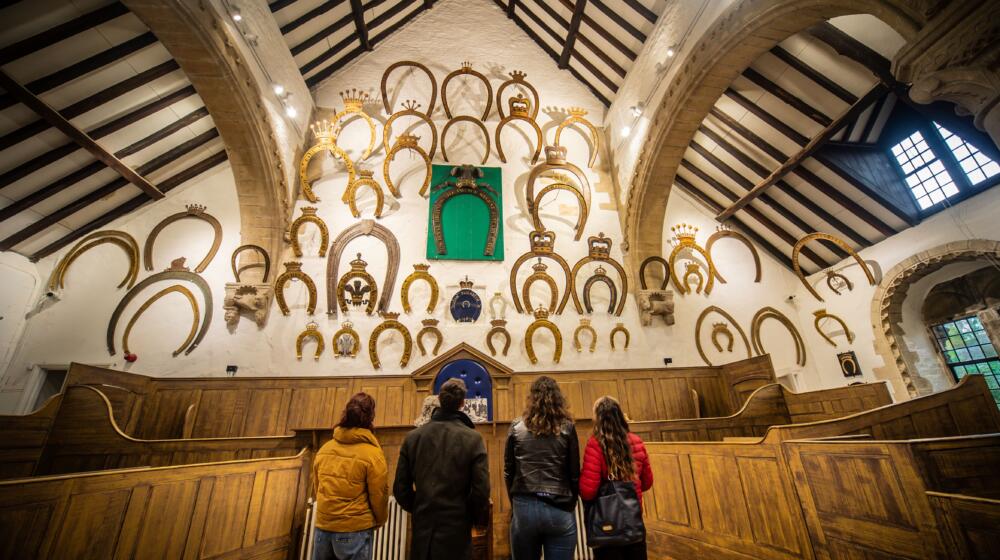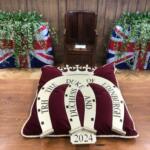
RUTLAND’S ROYAL ROOTS
In recognition of the recent Royal visit where we welcomed the Duke and Duchess of Edinburgh to see our statue of the late Queen Elizabeth II, we thought we’d delve into Rutland’s many connections to royalty. You can follow the Prince’s itinerary on your next visit to Oakham.
 The tradition of giving Rutland to Anglo-Saxon Queens started with Emma of Normandy, mother of Edward the Confessor, who was granted ‘Roteland’ on her marriage to King Ethelred the Unready in AD 1002. In turn, Edward the Confessor gifted the land to his wife, Queen Edith, in 1053. ‘The extreme western area of Edith’s lands’ is thought to be how Edith Weston got its name.
The tradition of giving Rutland to Anglo-Saxon Queens started with Emma of Normandy, mother of Edward the Confessor, who was granted ‘Roteland’ on her marriage to King Ethelred the Unready in AD 1002. In turn, Edward the Confessor gifted the land to his wife, Queen Edith, in 1053. ‘The extreme western area of Edith’s lands’ is thought to be how Edith Weston got its name.
Ayston lies next to the busy A47 by-pass of Uppingham. However, it still retains its charm with the Hall, the church and its few brown-stone cottages all close by. It’s almost impossible to believe that Edward I, King of England (also known as Edward Longshanks) once stayed here.
Being largely Royal property, the village of Langham was given by successive kings to various influential families. It was granted to Thomas Cromwell by King Henry VIII, whose family owned Langham until 1600 when it was sold to Sir Andrew Noel. The Manor of Langham remained in the Noel family until the sale of the Gainsborough estates in 1925.
Oakham Castle’s unique collection of decorative horseshoes is the result of an ongoing tradition requiring any Peer of the Realm who passes through the town to present a horseshoe to the Lord of the Manor of Oakham. Over 230 are currently on display and free to visit, including:
Edward IV 1470
This great wrought-iron horseshoe was put up by royal command in around 1470, and is the earliest recorded example. Originally decorated with roses outlined in black on a red background, it was hung on the walls after the king’s victory at the Battle of Losecoat Field.
HRH Princess Alexandrina Victoria (later Queen Victoria) 1835
The date on this horseshoe tells us that the Princess was still two years from her accession to the throne when she visited the Castle in the company of her mother HRH The Duchess of Kent.
His Majesty King George VI 1944
He really didn’t think he would ever be king, but the abdication of his brother Edward VIII forced the crown upon him. He was the last Emperor of India but the first Head of the Commonwealth, and presented this shoe on a formal visit to inspect the Airborne Regiment in Oakham.
Her Majesty Queen Elizabeth II 1967
‘I hope that the presence of my horseshoe in Oakham Castle will always be a bond between me and the people of Rutland’. So pronounced the Queen on a dais in front of the castle and before a large crowd as she donated a horseshoe from one of her racehorses.
HRH The Prince of Wales, 2003
Now King Charles III, his decorative horseshoe includes a jewelled crown and a representation of the Prince of Wales’s heraldic badge containing three feathers and the German motto ‘Ich dein’ meaning ‘I serve’.
The Duchess of Cornwall, 2014
The Duchess of Cornwall (now The Queen Consort) presented a decorative horseshoe to the Lord of the Manor, Jos Hanbury in June 2014, accompanied by Prince Charles – now our monarch.
Prince Edward & Duchess Sophie, 2024
 The most recent royal visit saw the Duke and Duchess of Edinburgh come to visit the newly unveiled statue of his mother, the late Queen Elizabeth II, where the couple presented a rare double horseshoe to Oakham Castle.
The most recent royal visit saw the Duke and Duchess of Edinburgh come to visit the newly unveiled statue of his mother, the late Queen Elizabeth II, where the couple presented a rare double horseshoe to Oakham Castle.
Meaning the oldest and newest horseshoes are from Royal Edwards – just 554 years apart!
